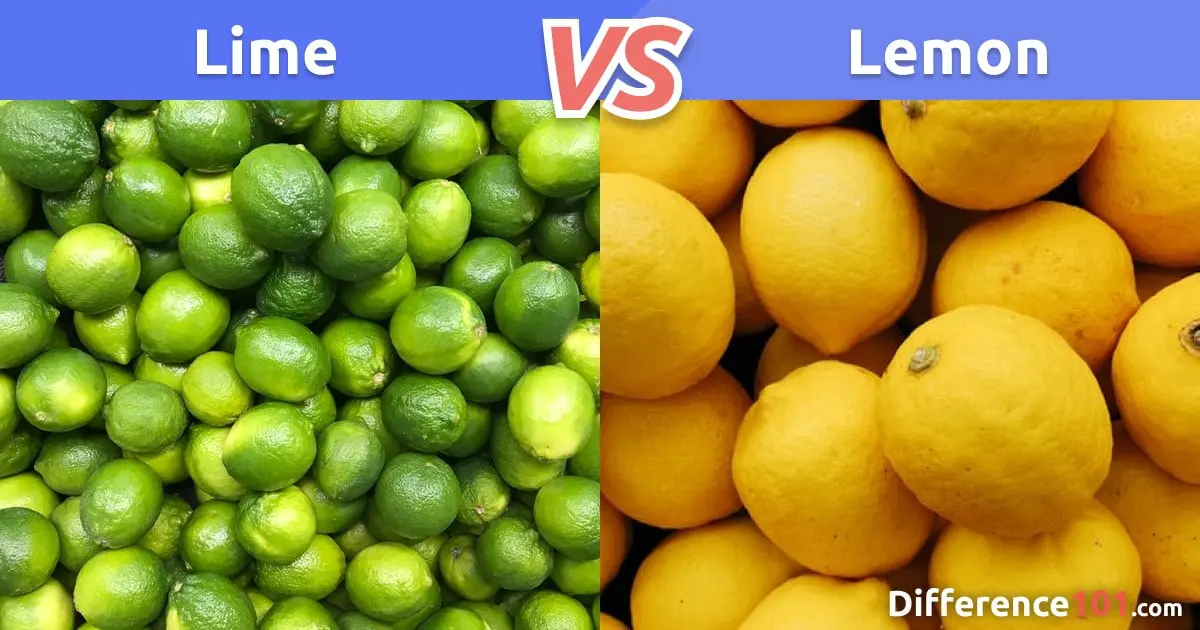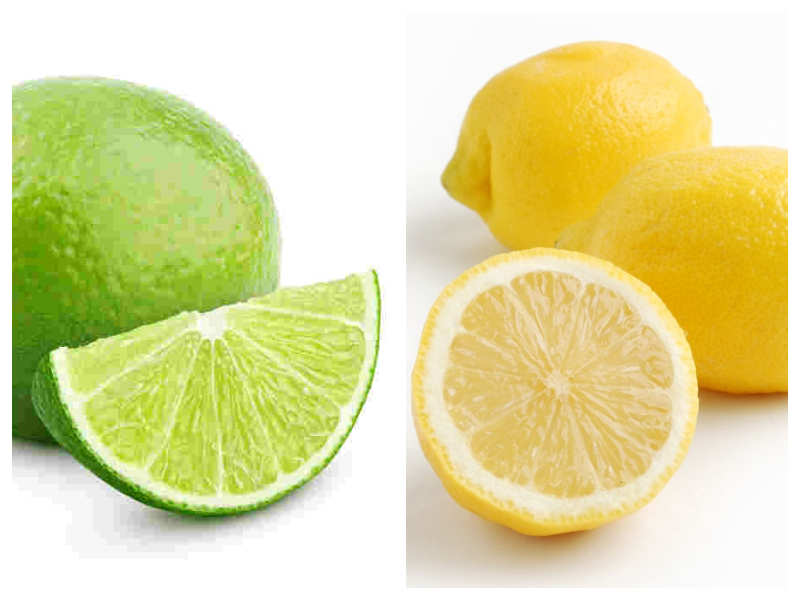
The nutritional benefits of lemons and limes are the same. Although lemons have slightly more of some vitamins and minerals the difference is too small to have any effect.

The nutritional benefits of lemons and limes are the same.
Different between lime and lemon. Lemons were introduced into Spain and North Africa around 1100 CE. Along with limes they were brought into the rest of Europe by Crusaders. Lemon trees are evergreen and thrive in more.
Perhaps one of the most obvious differences between lemons and limes is their appearance. Lemons are usually bright yellow while limes are typically a bright shade of green. Talking about appearance usually they differ in shape and color.
However sometimes limes are ripe and yellow and that is when you may have trouble telling the difference between the two. Another factor that is similar in appearance is the inside of the lime and lemon. Lemon is a fruit from the small evergreen lemon tree Citrus limon that is native to Asia.
In comparison lime is actually a hybridized citrus fruit and comes in many different varieties around the world. However both lime and lemon are from the same citrus family. Lemons have a pH range of 200 to 260 due to the citric acid content but they have more natural sugars than limes which is why they are sweeter.
Are smaller than lemons and they are ever so slightly higher in carbohydrates and lower in protein than lemons but this difference is extremely minute. Typically lemons are yellow larger than limes and ellipsoidal. Whereas limes are green small and typically round.
In terms of flavors lemons have a sour taste with about 2 total sugar while bitter limes have between 05 and 075. Interestingly lemons are slightly sweeter than limes. Limes and lemons are very similar nutritionally.
Here are a few of the similarities and differences of limes vs lemons. Both limes and lemons are high in citric acid. Lemons have slightly higher citric acid than limes source.
Lemons have more Vitamin C than limes source. A 35 ounce serving of lemons has 88 of the. According to US Citrus one of the key differences between lemons and limes is that regular limes are a little less flavorful which is why lemons or key limes are used for punchier recipes.
However limes pair perfectly with tropical dishes while lemons better. The nutritional benefits of lemons and limes are the same. Although lemons have slightly more of some vitamins and minerals the difference is too small to have any effect.
The main difference in the flavour between the two lies in the fact that lime tastes bitter and acidic whereas lemon is sour and acidic. The essence of flavour is the basic difference between the two. Lemons have higher sugar content making them less bitter in taste.
Lime is more acidic with no traces of sugar making it bitter in terms of taste. Lime are of green color and usually have a small size whereas lemons are less acidic in nature have a yellow color and are of a larger size as compared to lime. The basic difference between these two is of their taste.
Lemons taste sour whereas lime is bitter in taste. One of the easiest ways of distinguishing these two citrus fruits is by their color. Lemon is naturally yellow whereas lime is generally green.
They also differ in shapes as lime is rounder and has thinner skin while lemon has an oval shape with thick skin. Limes and lemons are citrus fruits 1 that are genetically dissimilar but are closely related to each other. Experts say that lemon is a hybrid blend of citron and.
Difference between Lime and Lemon Juice. When it comes to taste lime juice are much sweeter compared to lemon juice which has a sour taste. In terms of nourishment lime is superior to lemon.
Lime contains higher phosphorous vitamin A calcium folate and vitamin C while lemon is rich in potassium and magnesium. Color Lime is green in color whereas lemon is splendid yellow in color and is a little more of a ripe fruit. What needs to be noted here is that lemons are not ripe limes.
Size Lime is round in shape and smaller in size measuring around 36 centimeters 1224 in in diameter with a thin outer skin.